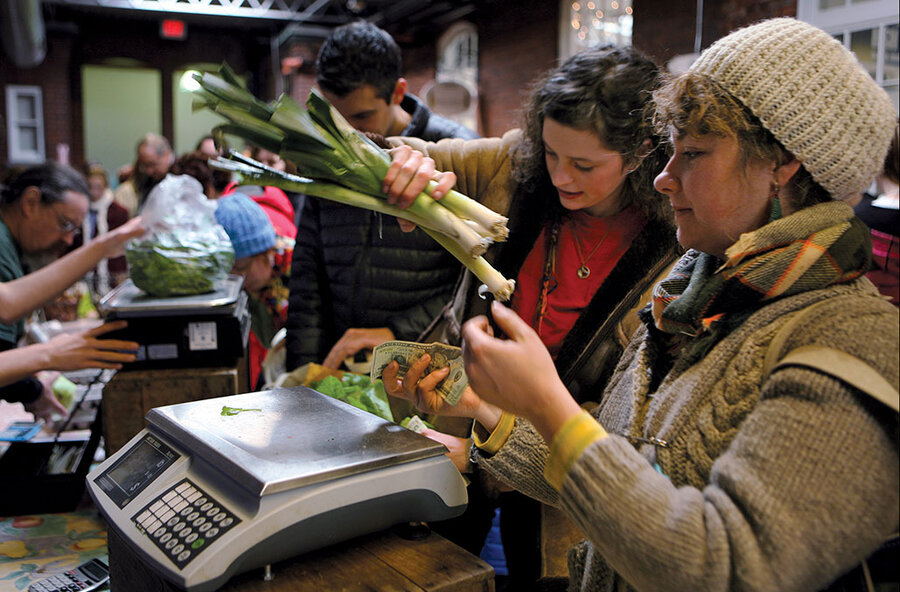Locals warm to winter markets
Loading...
On a chilly January morning, a man wearing a fleece jacket proffers a plate of cut fruit to the crowd of people strolling by. “Try a blood orange! Organically grown just an hour from here. Good orange!” Next to him a woman wearing a pink scarf calls out, “I have the most amazing conserve for you to try. You won’t find a better conserve.” Further on, a man hands a bag of shiitakes to a customer, then turns to replenish boxes of wild mushrooms from his van. Nearby, children draw a chalk circle on the pavement while musicians play a tune on guitar, cello, and buckets.
This is the San Francisco Ferry Building Farmers Market, one of more than 1,800 farmers’ markets that operate during winter months in every US state except Alaska, according to the United States Department of Agriculture’s database. Though its directory is incomplete – managers must add their markets to the USDA database themselves – the number of extended-season markets listed there has jumped 58 percent since 2010, according to Gwen Sparks, spokeswoman for the USDA.
Whether held indoors or out, most markets offer staple winter produce: winter squash, leafy greens, apples, and the like. But local markets also offer regional specialties, such as fresh-laid eggs, local cheese, and oysters at the Wintertime Farmers Market in Pawtucket, R.I.; goat meat, salsa, and pecans at the Cowtown Farmers Market in Fort Worth, Texas; and pastured beef, cider, and maple syrup at the Clintonville Farmers’ Market in Columbus, Ohio.
In Ohio, “the produce selection depends heavily on temperatures and weather,” says Michelle White, the Clintonville Farmers’ Market manager. “Our farmers are innovative in their season extension techniques, but when the temperature drops below zero, it’s extremely difficult to keep things growing.” She credits the community for the success of the wintertime farmers’ market, now in its second year. A successful winter market takes “space, producers, and a community dedicated to local food,” she says.
And then there is the flavor. “The farmers who come have incredible food. One thing that’s special about the winter market is that the greens are sweeter and more delicious than any other time of year,” says Kim Bayer, president of Michigan’s Slow Food Huron Valley, who shops year-round at the outdoor Ann Arbor, Mich., farmers’ market. “It’s really a vibrant and beautiful place.”







